Seok Bong Yoo
Latent-OFER: Detect, Mask, and Reconstruct with Latent Vectors for Occluded Facial Expression Recognition
Jul 21, 2023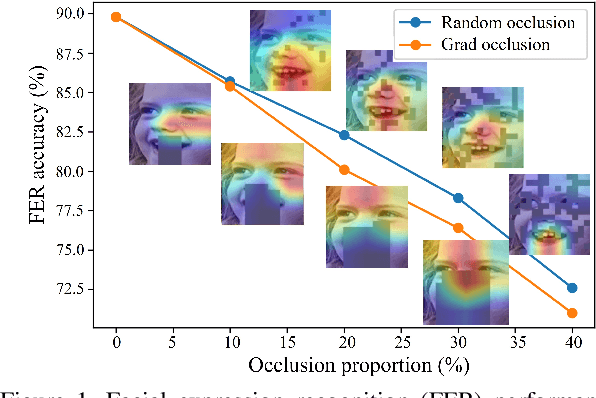
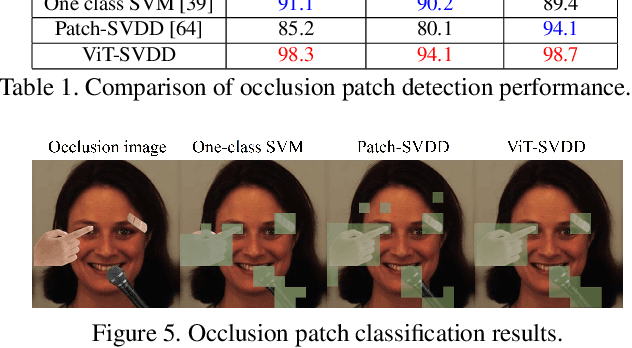
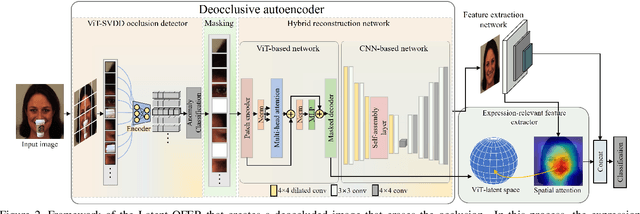
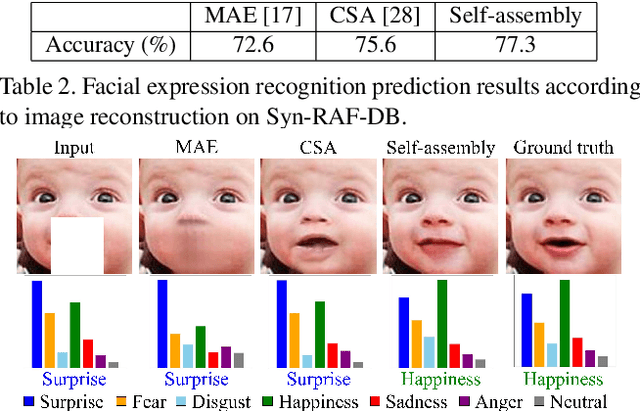
Abstract:Most research on facial expression recognition (FER) is conducted in highly controlled environments, but its performance is often unacceptable when applied to real-world situations. This is because when unexpected objects occlude the face, the FER network faces difficulties extracting facial features and accurately predicting facial expressions. Therefore, occluded FER (OFER) is a challenging problem. Previous studies on occlusion-aware FER have typically required fully annotated facial images for training. However, collecting facial images with various occlusions and expression annotations is time-consuming and expensive. Latent-OFER, the proposed method, can detect occlusions, restore occluded parts of the face as if they were unoccluded, and recognize them, improving FER accuracy. This approach involves three steps: First, the vision transformer (ViT)-based occlusion patch detector masks the occluded position by training only latent vectors from the unoccluded patches using the support vector data description algorithm. Second, the hybrid reconstruction network generates the masking position as a complete image using the ViT and convolutional neural network (CNN). Last, the expression-relevant latent vector extractor retrieves and uses expression-related information from all latent vectors by applying a CNN-based class activation map. This mechanism has a significant advantage in preventing performance degradation from occlusion by unseen objects. The experimental results on several databases demonstrate the superiority of the proposed method over state-of-the-art methods.
LatentGaze: Cross-Domain Gaze Estimation through Gaze-Aware Analytic Latent Code Manipulation
Sep 21, 2022
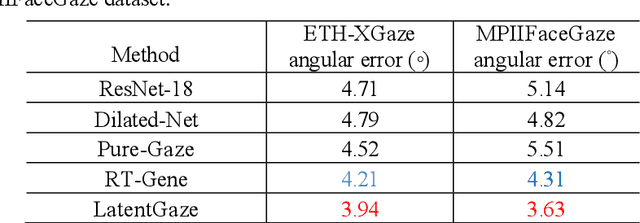
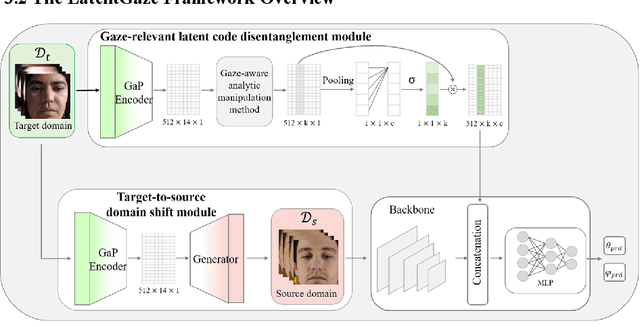
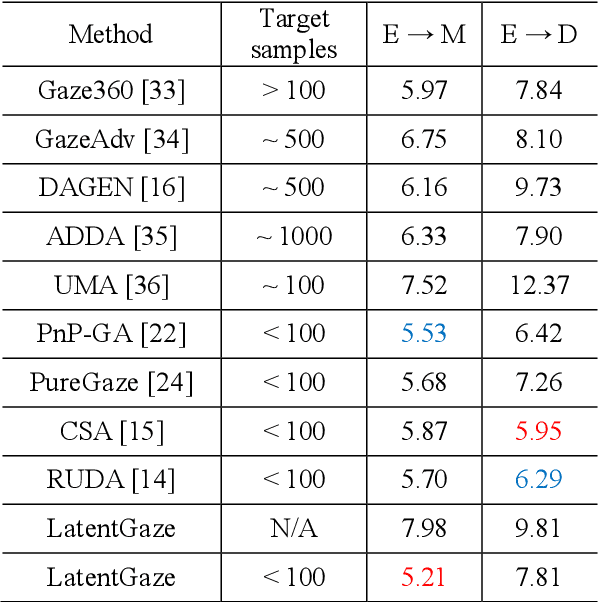
Abstract:Although recent gaze estimation methods lay great emphasis on attentively extracting gaze-relevant features from facial or eye images, how to define features that include gaze-relevant components has been ambiguous. This obscurity makes the model learn not only gaze-relevant features but also irrelevant ones. In particular, it is fatal for the cross-dataset performance. To overcome this challenging issue, we propose a gaze-aware analytic manipulation method, based on a data-driven approach with generative adversarial network inversion's disentanglement characteristics, to selectively utilize gaze-relevant features in a latent code. Furthermore, by utilizing GAN-based encoder-generator process, we shift the input image from the target domain to the source domain image, which a gaze estimator is sufficiently aware. In addition, we propose gaze distortion loss in the encoder that prevents the distortion of gaze information. The experimental results demonstrate that our method achieves state-of-the-art gaze estimation accuracy in a cross-domain gaze estimation tasks. This code is available at https://github.com/leeisack/LatentGaze/.
HAZE-Net: High-Frequency Attentive Super-Resolved Gaze Estimation in Low-Resolution Face Images
Sep 21, 2022



Abstract:Although gaze estimation methods have been developed with deep learning techniques, there has been no such approach as aim to attain accurate performance in low-resolution face images with a pixel width of 50 pixels or less. To solve a limitation under the challenging low-resolution conditions, we propose a high-frequency attentive super-resolved gaze estimation network, i.e., HAZE-Net. Our network improves the resolution of the input image and enhances the eye features and those boundaries via a proposed super-resolution module based on a high-frequency attention block. In addition, our gaze estimation module utilizes high-frequency components of the eye as well as the global appearance map. We also utilize the structural location information of faces to approximate head pose. The experimental results indicate that the proposed method exhibits robust gaze estimation performance even in low-resolution face images with 28x28 pixels. The source code of this work is available at https://github.com/dbseorms16/HAZE_Net/.
 Add to Chrome
Add to Chrome Add to Firefox
Add to Firefox Add to Edge
Add to Edge